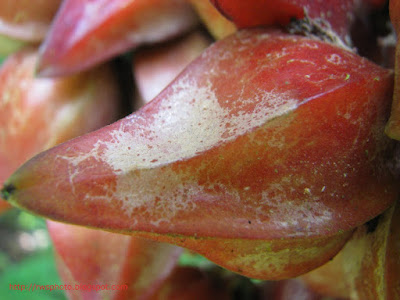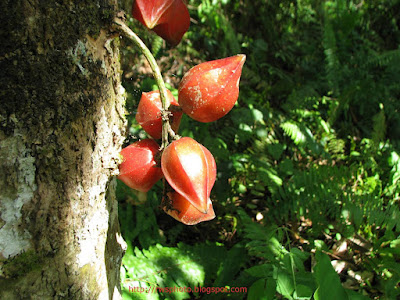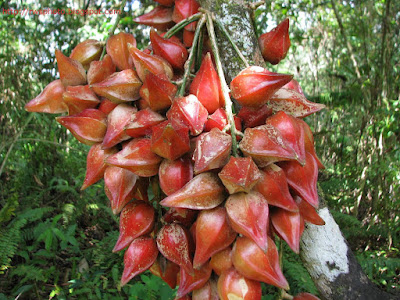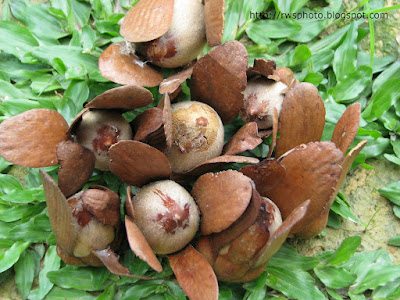I get to hold a box of Macadamia Integrifolia Nuts, freshly flown from Hawaii. Would you believe it? Macadamia Integrifolia Nuts in Malaysia. And no, the nuts will not be roasted but destined to a nursery. Hawaii is the largest producer of Macadamia nuts.

Macadamia nuts (Macadamia integrifolia) are dry drupes containing a very hard seed-bearing endocarp. According to most botanical references, the outer husk represents part of the ovary wall or pericarp.

They are small to large evergreen trees growing to 2–12 m tall. The leaves are arranged in whorls of three to six, lanceolate to obovate or elliptical in shape, 6–30 cm long and 2–13 cm broad, with an entire or spiny-serrated margin. The flowers are produced in a long slender simple raceme 5–30 cm long, the individual flowers 10–15 mm long, white to pink or purple, with four tepals. The fruit is a very hard woody globose follicle with a pointed apex, containing one or two seeds.

The nuts are a valuable food crop. Only two of the species, Macadamia integrifolia and Macadamia tetraphylla, are of commercial importance. The remainder of the genus possess poisonous and/or inedible nuts, such as M. whelanii and M. ternifolia; the toxicity is due to the presence of cyanogenic glycosides.
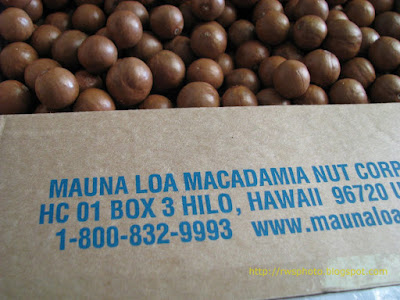
Macadamia tree cultivation and processing
The macadamia tree is usually propagated by grafting, and does not begin to produce commercial quantities of nuts until it is 7–10 years old, but once established, may continue bearing for over 100 years. The macadamia nut has an extremely hard shell, but can be cracked using a blunt instrument, such as a hammer or rock applied with some force to the nut sitting in a concave surface, or a custom made macadamia nutcracker can be used.
Macadamia Nuts in the Diet Lower Cholesterol
How many times have you said, "nuts to the diet." Well now perhaps it should be "nuts in the diet." It seems that macadamia nuts may be a good addition to the daily diet, particularly if you want to reduce blood cholesterol levels. Macadamia nuts like all non-animal foods contain no cholesterol. But they are remarkable in the fact that their fat contains over 86% monounsaturated fatty acids. The average macadamia nut will also add about 18 calories to your diet. Oil from the macadamia nut is used in the cosmetic industry because of similarities between the nut oil and human skin.
Recommended link:
* Fruits Called Nuts
* HAWAII MACADAMIA NUT ASSOCIATION

